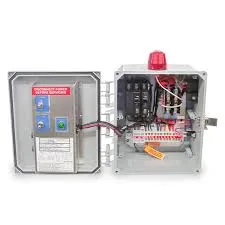Sealing Tape for Water Leaks A Comprehensive Guide
Water leaks can be a homeowner's worst nightmare. Not only can they cause significant damage to the structure of your home, but they can also lead to expensive repairs and health hazards like mold growth. Fortunately, sealing tape has emerged as a versatile and effective solution for many water leak problems. In this article, we will explore what sealing tape is, its various types, and how to effectively use it to prevent water leaks.
What is Sealing Tape?
Sealing tape is a specialized adhesive tape designed to create a waterproof barrier that prevents water from seeping through cracks, gaps, and holes. It is commonly used in various applications, from plumbing repairs to roofing and even outdoor projects. Sealing tape comes in various materials, thicknesses, and adhesive strengths, making it suitable for different surfaces and conditions.
Types of Sealing Tape
There are several types of sealing tape available on the market, each optimized for specific uses
1. Duct Tape While often used for general repairs, high-quality duct tape can also provide a temporary fix for minor leaks. However, it may not be the most durable option for long-term water sealing.
2. PVC Self-Fusing Tape This type of tape is particularly useful for plumbing repairs. It bonds to itself and creates a solid seal that can withstand high pressures. It is commonly used to patch leaking pipes and hoses.
3. Butyl Rubber Tape Known for its excellent waterproofing properties, butyl rubber tape is ideal for sealing gutters, roofs, and other outdoor applications. It remains flexible and adheres well to various surfaces.
4. Teflon Tape Primarily used for plumbing, Teflon tape (also known as PTFE tape) is ideal for preventing leaks in threaded pipe connections. It's a must-have for any plumbing task.
5. Foam Tape This type of sealing tape is typically used for insulation and weather-stripping. It can help reduce moisture infiltration and improve energy efficiency in your home.
sealing tape for water leaks

How to Use Sealing Tape for Water Leaks
Using sealing tape correctly can maximize its effectiveness. Here’s a step-by-step guide to help you tackle water leaks using sealing tape
1. Identify the Source of the Leak Before applying any tape, you need to locate the exact spot where the leak is occurring. This may involve inspecting pipes, roofs, or any area suspected of water damage.
2. Clean the Area Ensure that the surface where you will apply the tape is clean and dry. Remove any dirt, debris, or moisture. This will help the tape adhere better and create an effective seal.
3. Cut the Tape Depending on the size of the leak, cut a piece of sealing tape that is large enough to cover the affected area, with some extra material on the edges for a secure seal.
4. Apply the Tape Peel the backing off the tape (if applicable) and press it firmly over the leak. Make sure to apply the tape in a way that prevents water from seeping underneath. For best results, consider overlapping the edges of the tape.
5. Smooth Out Bubbles Once the tape is in place, smooth out any air bubbles or wrinkles to ensure a tight seal. This step is crucial for creating a waterproof barrier.
6. Monitor the Repair After applying the tape, monitor the area for any signs of continued leaking. Depending on the severity of the leak, you may need to follow up with more permanent repairs.
Conclusion
Sealing tape serves as a practical and affordable solution for addressing water leaks around the house. Its versatility across different materials and applications makes it an essential tool for homeowners and DIY enthusiasts alike. However, it is important to remember that while sealing tape can provide a temporary fix, it may not be suitable for all situations. For significant leaks or long-term solutions, it’s always advisable to consult with a professional plumber or contractor. By taking proactive measures and utilizing sealing tape effectively, you can protect your home from the damaging effects of water leaks.
-
XIANGFAN Rubber Tape-Ultimate Solutions for All Your Insulation NeedsNewsJun.24,2025
-
XIANGFAN Rubber Tape-Protection for Industrial and Residential ApplicationsNewsJun.24,2025
-
XIANGFAN Rubber Tape: Superior Safety and Sealing for Demanding EnvironmentsNewsJun.24,2025
-
XIANGFAN Rubber Tape: Reliable Solutions for Every Electrical ChallengeNewsJun.24,2025
-
XIANGFAN Electrical & Industrial Tape: Powering Reliability Across IndustriesNewsJun.24,2025
-
XIANGFAN Electrical & Industrial Tape: Excellence in Every ApplicationNewsJun.24,2025
